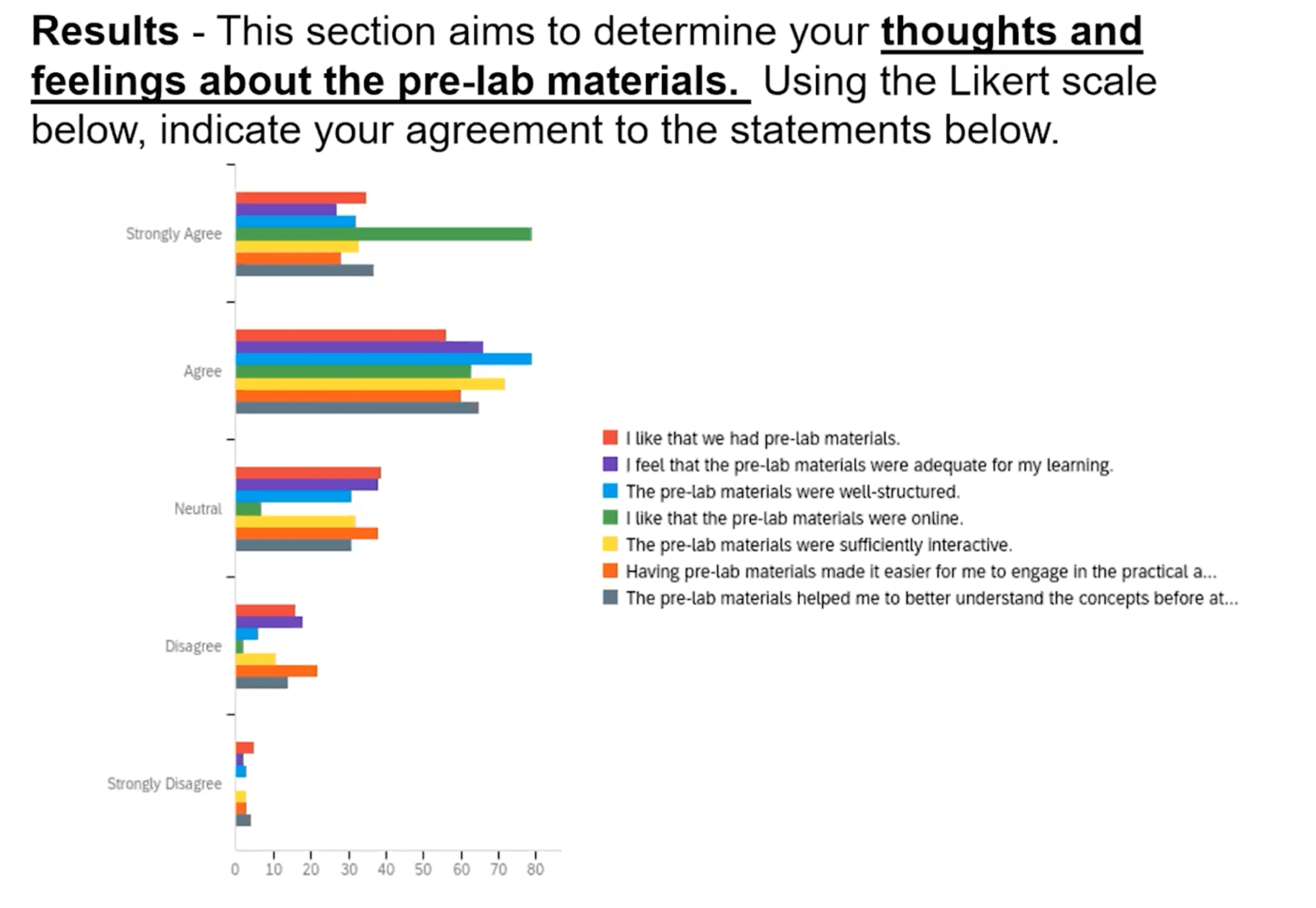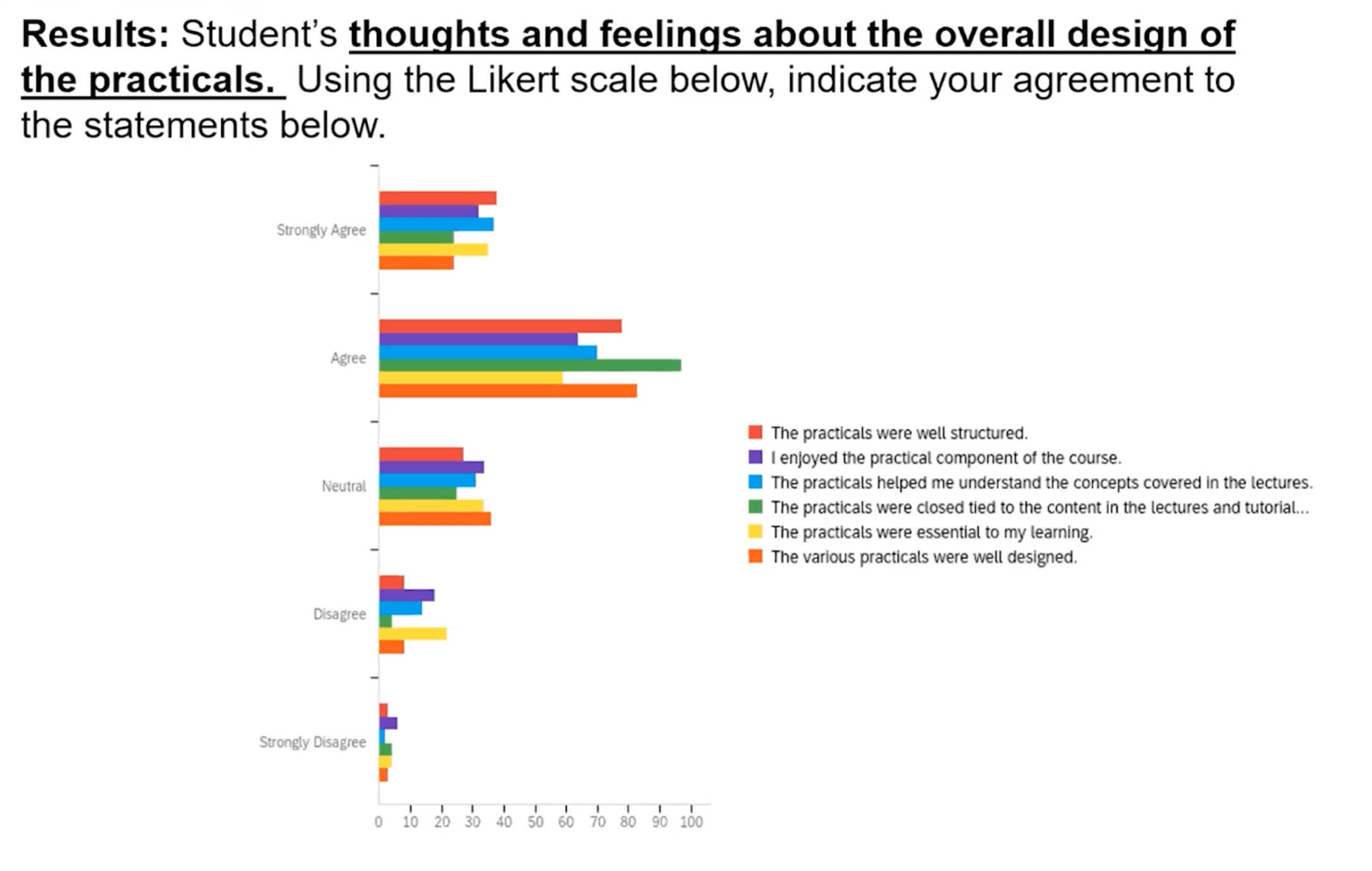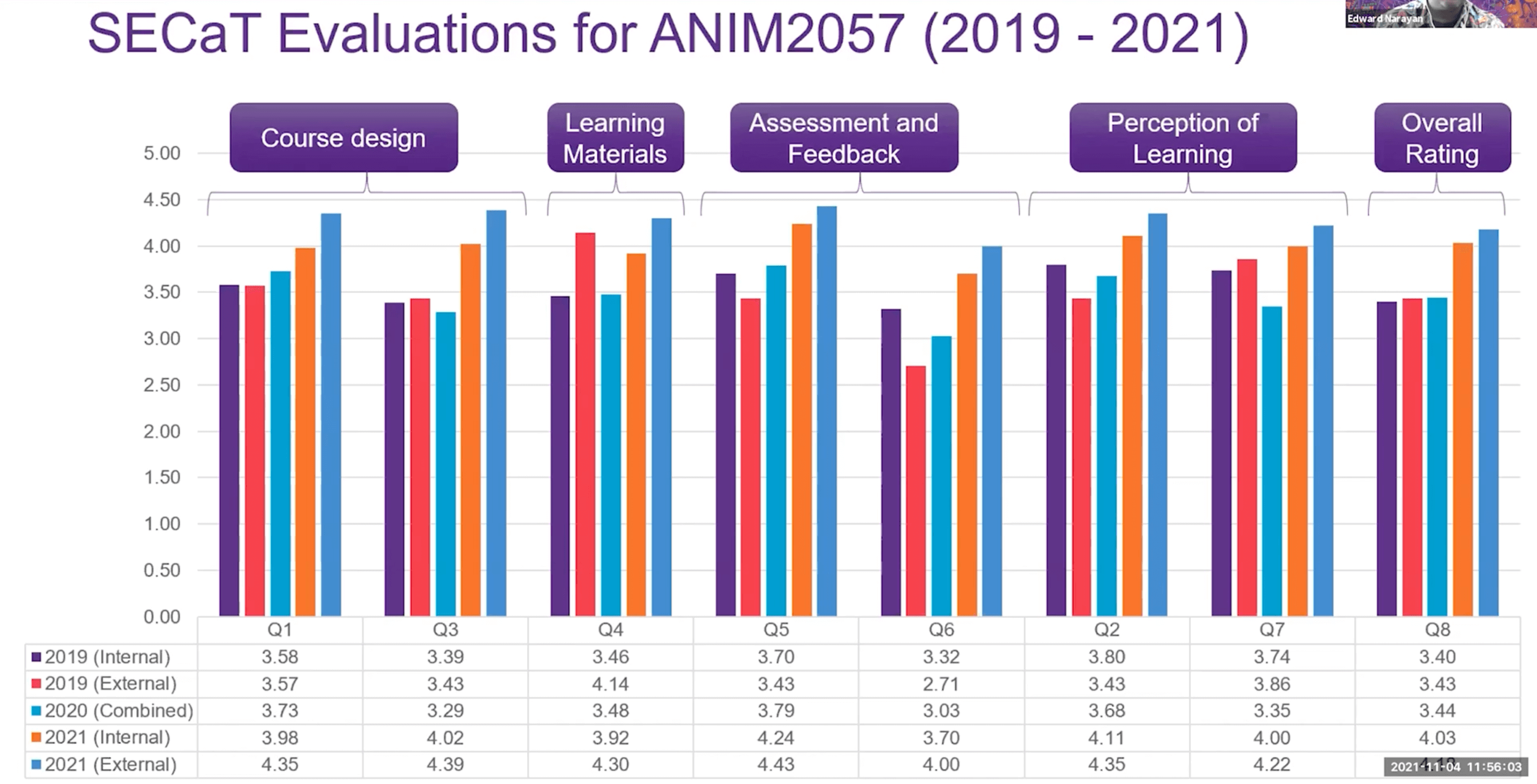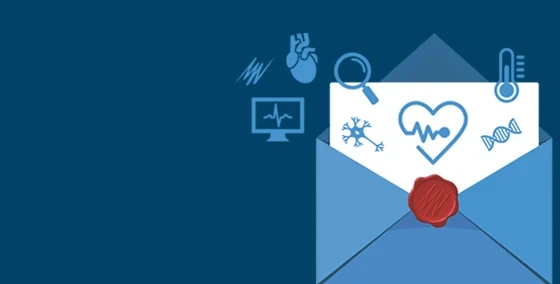Dr. Edward Narayan is an award-winning Senior Lecturer in the School of Agriculture and Food Sciences at The University of Queensland (UQ), where he has been teaching for three years.
Beginning his journey as an educator in 2020, Edward discovered Lt early in the pandemic and has used it to teach introductory animal physiology and anatomy courses ever since.
In the lab, practicals revolve around the PowerLab and integrated physiological systems, including the central and peripheral nervous systems, cardiovascular system, and musculoskeletal system.
With a busy research career running the Stress Lab at UQ, Edward was looking for a solution that would both promote student satisfaction and ensure learners developed practical skills that would equip them for careers in veterinary science and other fields.
We spoke with Edward to learn more about his journey to becoming an educator, how he teaches anatomy and physiology to first- and second-year students, and the advice he has for others looking to use technology in their teaching.
The path to teaching: frogs, koalas, crocodiles, and more
Growing up in Fiji, Edward was always interested in animals. While undertaking his Masters degree in the islands, he met “some really forward-thinking scientists who were optimizing methods to measure stress and reproductive steroid markers in New Zealand’s Archey’s frogs.”
“I was part of that team who were discussing how we can use non-invasive techniques to measure the endocrinology of amphibians.” This research focus became the topic of his subsequent PhD: his goal was to optimize immunoassays to measure hormones in frog urine. Edward says, “It wasn’t easy because I was on this island - there are 300 or so islands in Fiji, and I was sent to one of the only islands where the frog, which is endemic to Fiji, is found. That’s where I realized my dream of being a researcher - doing something that’s valuable by producing knowledge.”
Edward has continued to pursue his interest in non-invasive techniques for hormonal measurement, and now runs the Stress Lab at UQ. The scientists in this lab are working to optimize non-invasive techniques for measuring stress in various animals - koalas, kangaroos, sheep, birds, and fish. Edward is proud of the many applications his research has: “There is an animal welfare angle to it; you are applying these techniques to understand what the animal is telling us. Most of the animals we have around us are prey species…for that reason, it’s very hard to assess what’s going on with them without an obvious health problem.”
Balancing research and education
While Edward is passionate about research, he is equally excited about the possibilities of teaching - as he calls it, “the other side of the coin”.
When he first arrived at UQ in 2020, he was curious about the responsibilities of his new teaching role. It turns out that ADInstruments hardware was there to remind him of his own student days. “When I went into the lab, I saw the PowerLabs - they took me back to my undergraduate labs in Fiji, where we had the same technology. This was destiny - it was made for me.”
“I didn’t have to spend too much time getting up to scratch with the techniques. Getting to know ADI and colleagues in Lt Brain Trust and the community that we have built up of educators - that has really helped me.”
For Edward, who interacts with around 600 undergraduate students a year, teaching has become just as much a passion as his research. He says, “Teaching is not a task, it’s something I enjoy doing. Last year, I received The UQ Science Award for Leadership & Mentoring - that was mainly because of the innovative and outside-the-box thinking that we had with the PowerLabs, especially during COVID-19.”
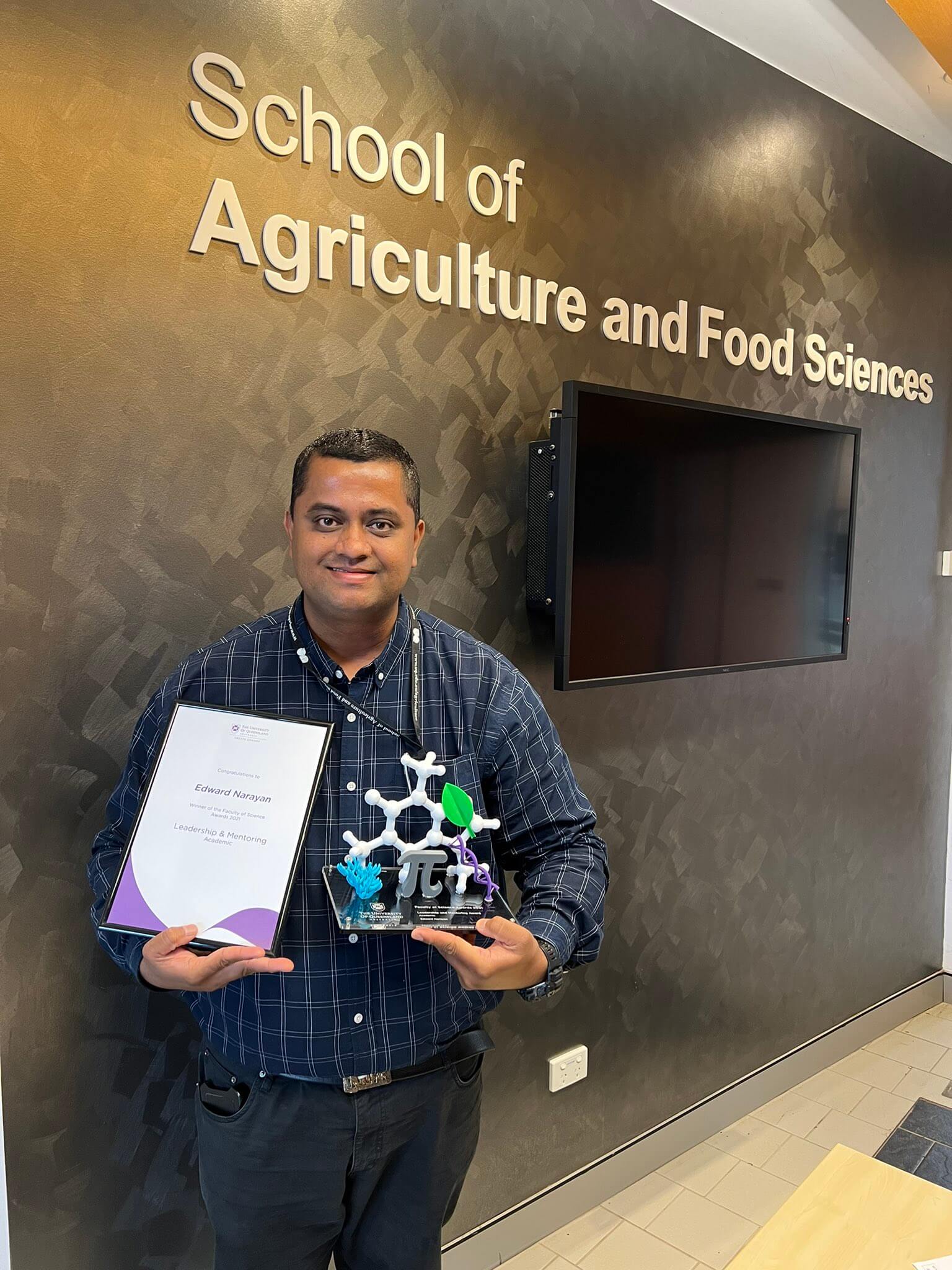
Dr. Edward Narayan poses with his UQ Science Award for Leadership & Mentoring.
Falling in love with physiology
Edward’s favorite thing about teaching is seeing students feeling happy once they are satisfied that they have actually learned the subject matter. In physiology, he says, “you can memorize the subject material but it’s not the best way to learn. I am really trying to get this message across to students - you need to start loving what you’re doing, it’s not just a task."
Lt, an online-learning platform for lab-based courses, has helped students to extend their physiological understanding to real-life contexts. “Students have given examples of real life where their dogs have been unwell - and now they know what white blood cells do, and they’ve simulated a test in Lt. That itself has really awakened their senses and gotten them to think a bit more beyond the textbooks. That’s what is needed to keep them going and for them to become professionals.”
Related: Animal Physiology Collection in Lt »
A focus on student equity and satisfaction
Edward teaches first- and second-year anatomy and physiology in the School of Agriculture, and these core courses feed into a wide range of programmes: “I am catering for vet techs, equine science, wildlife science, agribusiness, and even the occasional finance student!”
Because of these different backgrounds, Edward’s students need differing levels of support. “Equity is a big aspect of our teaching - how can we make our teaching more equitable? Understanding that students have varying backgrounds and abilities was an important realization. With research we are in competition, but with teaching a young mind, an 18-year old, we have to take it in bite-size pieces and teach things one at a time.”
Teaching is always a challenge - you need to meet the student where they are, make sure they understand the correct information, and can apply that information in useful ways.
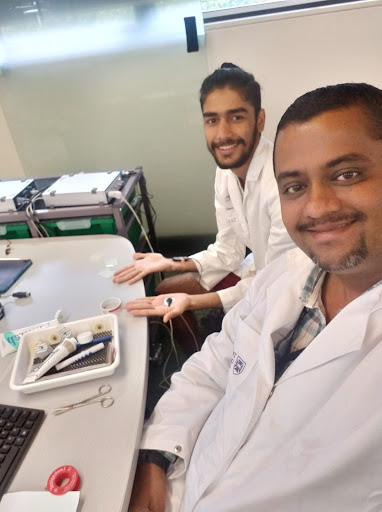
Dr. Edward Narayan and PhD scholar Harsh Pahuja in the Physiology lab at the Gatton campus (UQ) with a PowerLab setup.
To do this, Edward uses humor and tries to be approachable. “It doesn’t matter how big or small the class is - you have to make it exciting by doing something. The students love my jokes.”
Edward is committed to student satisfaction, and knows that it can be hard to tell how someone is coping at a glance. “Just by looking at everyone, it’s hard to tell who’s engaged and who's struggling, so I try to be approachable and encourage questions. Humanism is important - students are very busy, so making sure you leave an image that is memorable and positive goes a very long way.” Dr. Narayan also involves young tutors to encourage peer-to-peer learning - students are more likely to ask questions of an authority figure they perceive as more relatable.
One lecture in the whole year
Edward has been using Lt since 2020, when he quickly signed up for a free trial at the start of the pandemic. “I only gave one face-to-face lecture in that whole year,” he says. “During COVID, the biggest challenge was finding ways to teach online. "
"We completed all of the 10 practicals that semester in 2020. That was the reason why I survived coming from Sydney to UQ - the teaching side of things was nicely looked after by Lt. If you’re doing it online, all of the data is already available for you - that’s the benefit of the platform.”
In 2022, now that most students are back on campus, Edward is in the lab alongside the undergraduates: “In physiology in particular, we use Lt in all of our practicals - we look at the central nervous system, the peripheral nervous system, visual processing, full cardio, respiratory - all of the integrated systems.”
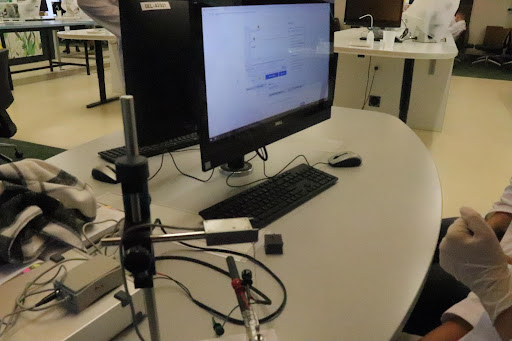
A PowerLab setup in the Physiology lab at the Gatton campus (UQ).
Related: Human Physiology Collection in Lt »
Lt is used to provide a scaffolded learning experience for animal science students. “At home, students do a pre-lab - for example , a refresher on the cardiovascular system - and we use that as an entry point to the lab. Our lab is set up so that if you submit a pre-lab, then you’re authorized to do the lab. That way the students are really engaged with Lt."
“We use Lt as the platform to provide that content to our students, and use PowerLabs for physical experiments. For example, we use cane toads as a model: we remove cardiac tissue, nervous tissue, gastrocnemius muscle…students feel so excited even with stimulating the muscle."
Edward is happy with the improvements he is seeing in his students as a result. He says, “Physiology is not an easy subject - it involves really complicated processes - but Lt and the PowerLabs, as educational tools, are really beneficial for the students. We definitely had a big improvement in the students’ cognitive ability with the assessments we were giving them.”
Promoting student self-efficacy
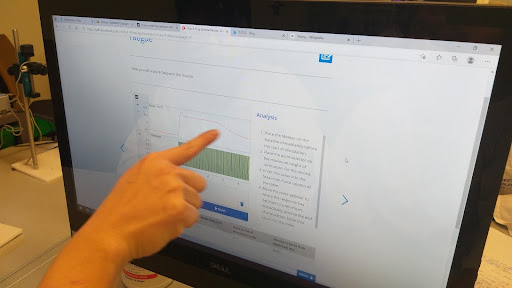
A student interacting with the Lt interface in the Physiology lab at the Gatton campus (UQ).
To make sure students are successful in the ‘real world’ of work, Edward is ensuring that they are exposed to atypical data. “One of the things I have touched on is to get students to look at each others’ data."
"For example, with skeletal muscle contraction, the data in Lt is the best example, it’s textbook stuff, but in the real world, nothing works quite like the textbook. You have to improvise and work out things on the go.”
“Even though they are first-year students, I am trying to get them to start looking at data from a position of ownership: I have dissected the cane toad, I have removed the muscles, I have spiked the muscles with epinephrine, and now I generated this result."
"That sense of belonging and being able to do that very early on in their university journey - Lt is definitely one of the best platforms in a lab environment to do that." The Lt system also allows students to learn how to handle hardware and how to record and interpret data: “attributes that are important in job interviews.”
What advice do you have for other educators who are considering using technology to teach?
Edward’s experience with Lt - from rapid adoption at the start of the pandemic to continual iteration and refinement of animal physiology lab practicals - has generated a number of insights for those wishing to adopt new approaches in their lab-based teaching.
1. Familiarize yourself with the technology
If you don’t understand the technology as an educator, you won’t be prepared to run a good practical session. “It’s important to understand the technology first before you throw your students into the deep end, because if not, there will be a bit of a splash back onto yourself as an educator.”
“I’m saying that because I’ve been through this journey; eventually winning The UQ Science Award for Leadership & Mentoring took effort in terms of getting students to engage and wanting to learn in a new format. Our education system is very driven by student feedback, so it’s important to build a strong connection between you and your technology and the students.”
Consider running a standalone session at the start of the course that shows students how to use Lt: “The most important practical is the first practical - the introduction to Lt. You don’t want a student coming to you in week 10 and saying - Edward, where is this button?” The ready-made 'Getting Started with Lt' lessons in Lt can also be used to support students in upskilling in the platform.
Related: Learn more about Lt, a cloud-based learning platform for labs »
2. Provide clear objectives for learning
It’s important to make it clear to students what they are expected to learn. As Edward says, “Some of the practicals are very intense. For first-year students, you want to break it down into one or two straightforward objectives - for example, getting skeletal muscles to contract and relax and then looking at muscle fatigue. This can be just enough - you don't always need to discover something new in three hours.”
Related: Talking Teaching: How to format learning objectives to improve student learning »
3. Encourage metacognition
While some students are keen to get the practical over with, it’s important to encourage metacognition - in other words, students thinking about their thinking. Edward likes to “divide up my session so that it includes an introduction discussing what we are doing with Lt, and ending with a reflection.”
Related: Talking Teaching: How to encourage metacognition »
“As soon as students see the last procedure or result, they’re picking up their bags and starting to leave. We are trying to stop that by telling students that we need to sit down for five minutes, breathe in, breathe out, and think about what we did today. You came with some knowledge, but as you step out of this door, do you think you have learned something in these three hours?”
4. Take advantage of support
Adopting a new technology can be a learning curve. Edward recommends that you participate in onboarding to get to know ADI staff, and know how you can reach them if there’s a power cut, for example. Edward says, “Parimal, our ADInstruments representative, comes every year to give an Lt refresher and run through the basics of what Lt is for tutors.”
Using Lt to continue to boost student satisfaction and success
Edward is on a mission to share Lt with colleagues in other disciplines, and will continue to use Lt for years to come. “I have a contract for the next couple of years, which is a sense of security for me and for the courses that we are doing.”
“Lt teaches the practical aspects of science which actually enhance the students’ capability and interest in the topic. That’s really important, because later on, anatomy and physiology will be the pillars on which they do more clinical and integrated learning. I am very happy that we have Lt here at the University of Queensland, and we are excited to be using it next year.”
Enjoy this story? Check out Edward’s online talk, Improving Anatomy and Physiology at the University of Queensland!
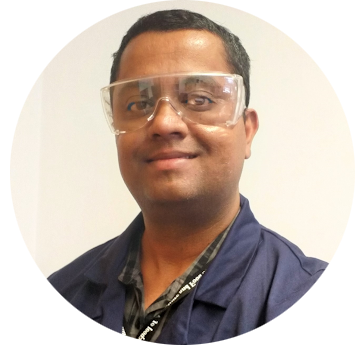
Dr Edward Narayan,
Senior Lecturer in Animal Physiology,
School of Agriculture and Food Sciences, Faculty of Science, University of Queensland (UQ).
Edward graduated with a PhD degree in Biology from the University of the South Pacific and validated non-invasive reproductive and stress endocrinology tools for amphibians. Edward coordinates first- and second-year anatomy and physiology courses at UQ. In 2021, he won the UQ Science Award for Leadership & Mentoring.
Edward's research interests lie in animal stress and welfare: he leads the Stress Lab at UQ and is widely published. He has supervised more than 50 students in their undergraduate special topic, Honours, Masters, and Ph.D. programs.

